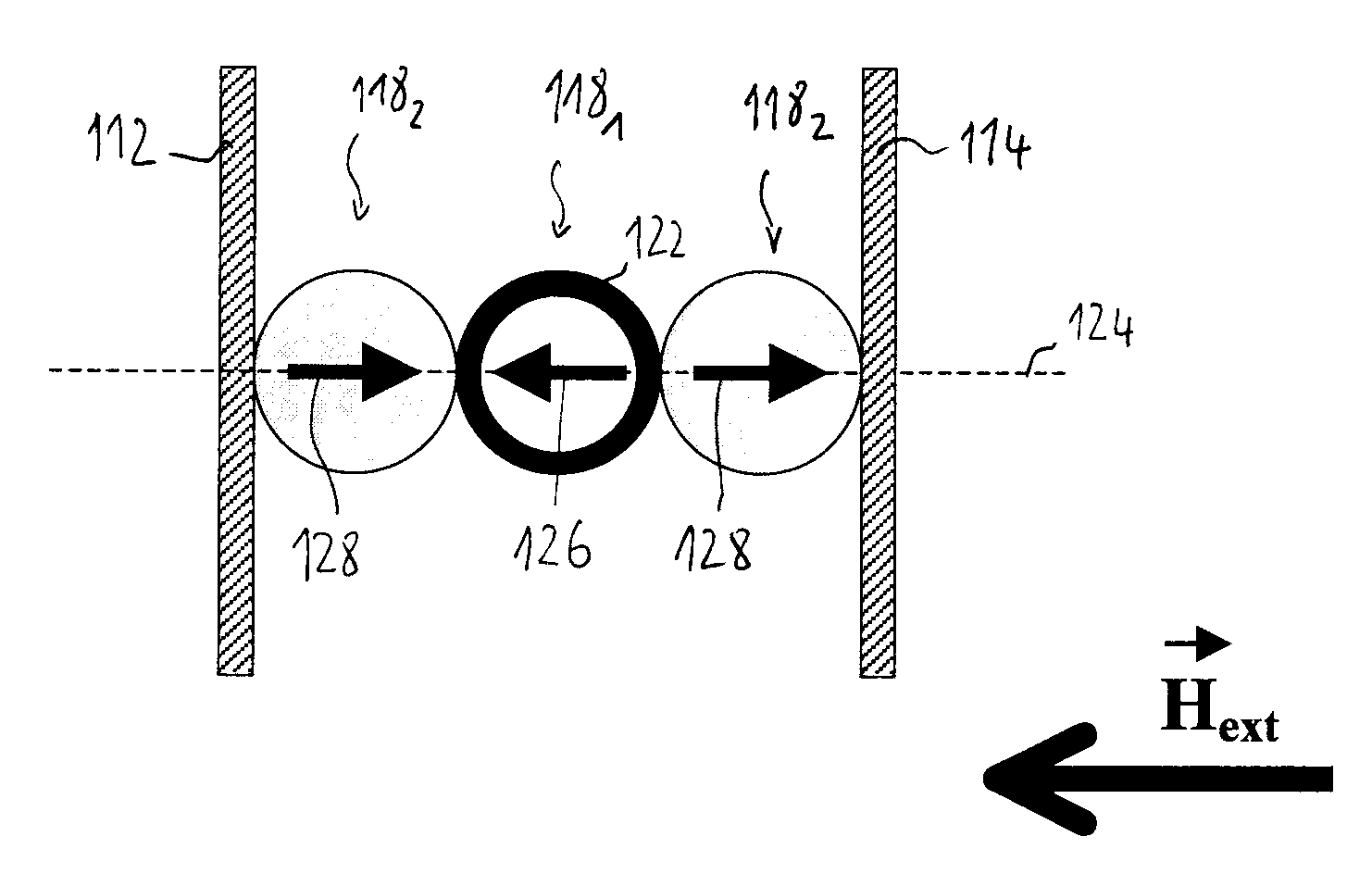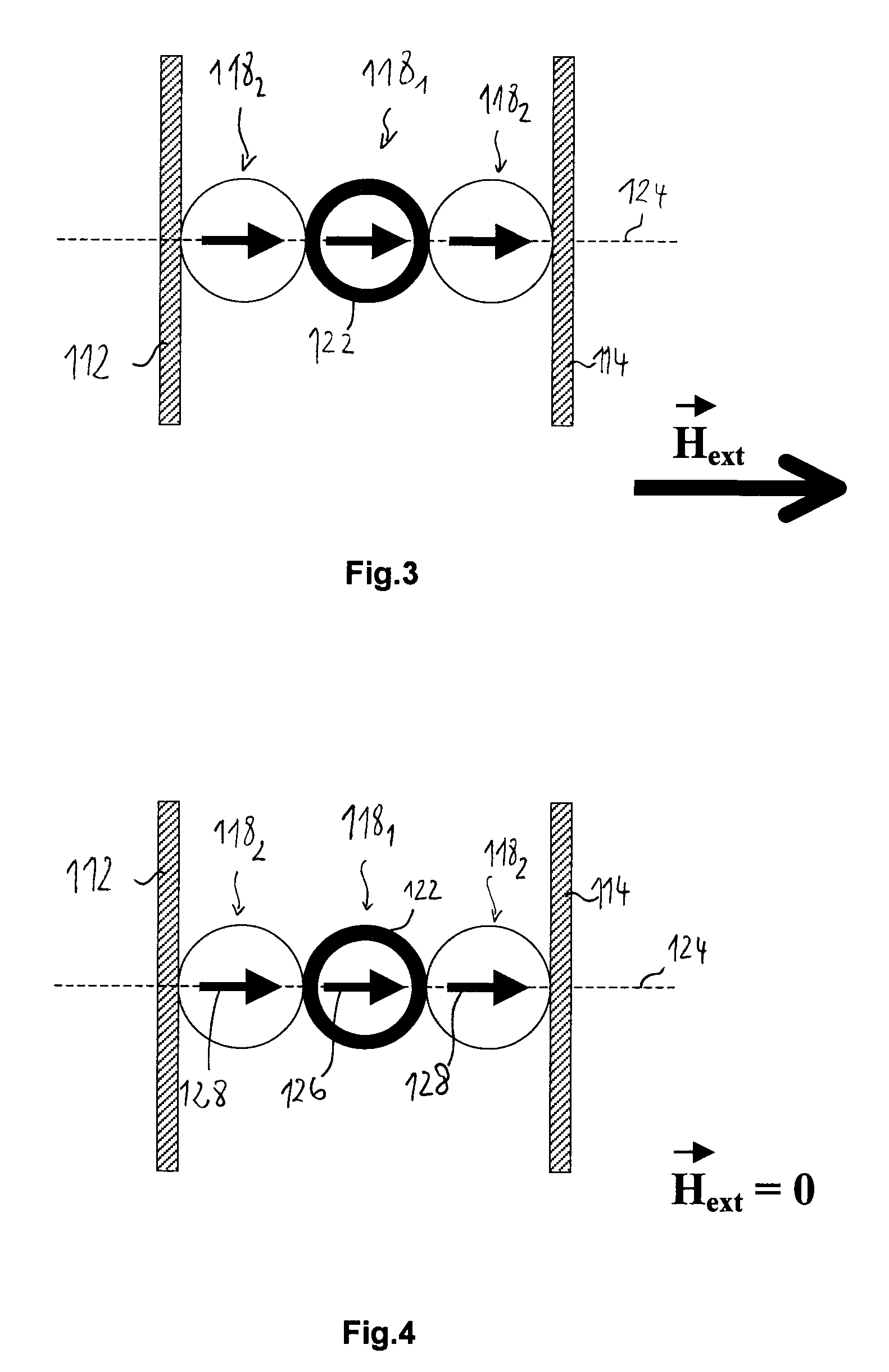Magnetic field sensing element having magnetic nanoparticles
a magnetic nanoparticle and sensing element technology, applied in the direction of magnetic field measurement using galvano-magnetic devices, instruments, galvano-magnetic devices, etc., can solve the problems of high cost design and equipment, inability to detect time-dependent magnetic fields, and high cost of thin film technology, so as to achieve the effect of easy and cheaper manufacturing
- Summary
- Abstract
- Description
- Claims
- Application Information
AI Technical Summary
Benefits of technology
Problems solved by technology
Method used
Image
Examples
first embodiment
[0048]FIG. 1: is a section view, along a plane parallel to the substrate, through a magnetic field sensing element according to the invention;
second embodiment
[0049]FIG. 2: is a section view, along a plane perpendicular to the substrate surface, through a magnetic field sensing element according to the invention;
[0050]FIGS. 3, 4 and 5 are sketches illustrating the working principle of the present magnetic field sensing element based on an exemplary embodiment featuring 3 nanoparticles.
PUM
 Login to View More
Login to View More Abstract
Description
Claims
Application Information
 Login to View More
Login to View More - R&D
- Intellectual Property
- Life Sciences
- Materials
- Tech Scout
- Unparalleled Data Quality
- Higher Quality Content
- 60% Fewer Hallucinations
Browse by: Latest US Patents, China's latest patents, Technical Efficacy Thesaurus, Application Domain, Technology Topic, Popular Technical Reports.
© 2025 PatSnap. All rights reserved.Legal|Privacy policy|Modern Slavery Act Transparency Statement|Sitemap|About US| Contact US: help@patsnap.com



